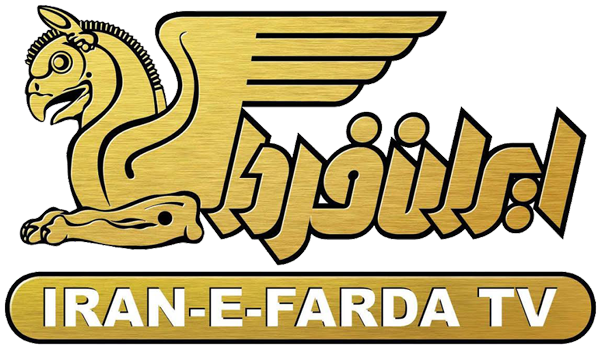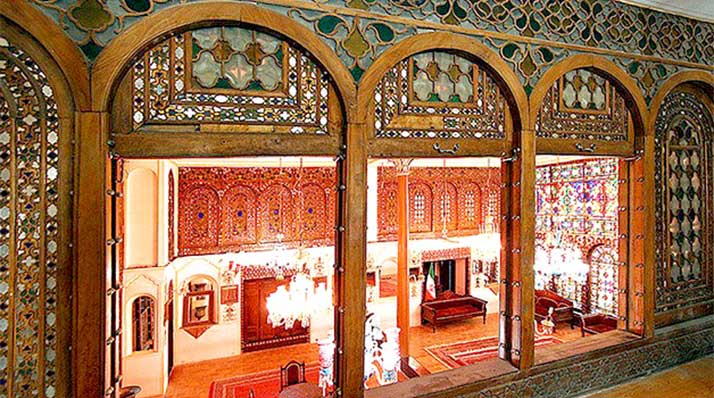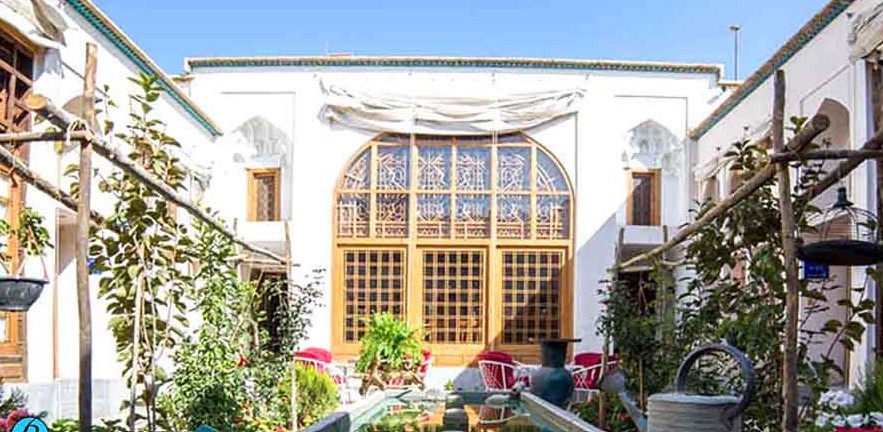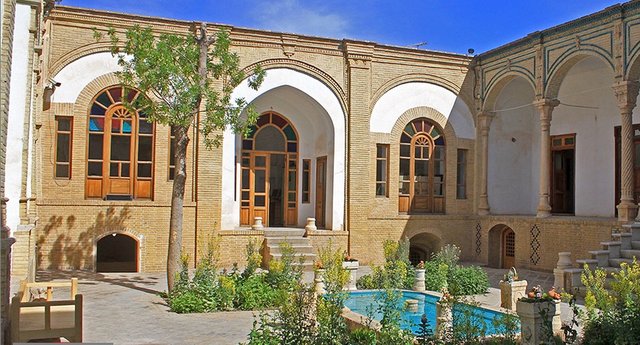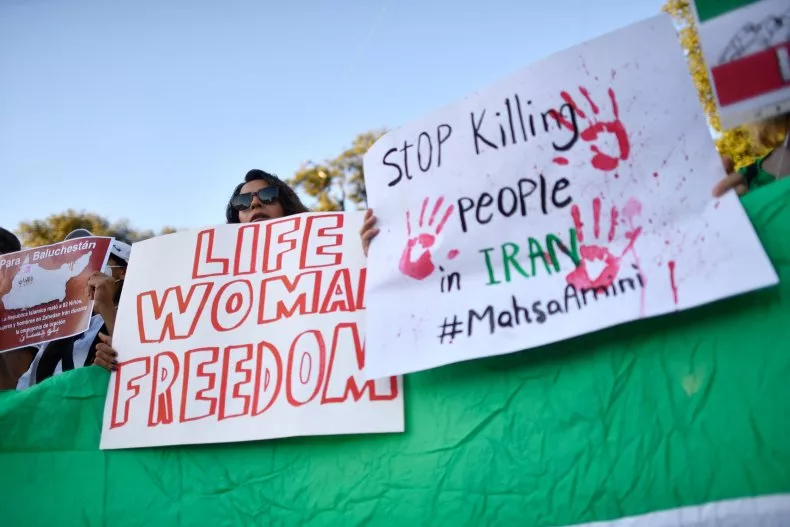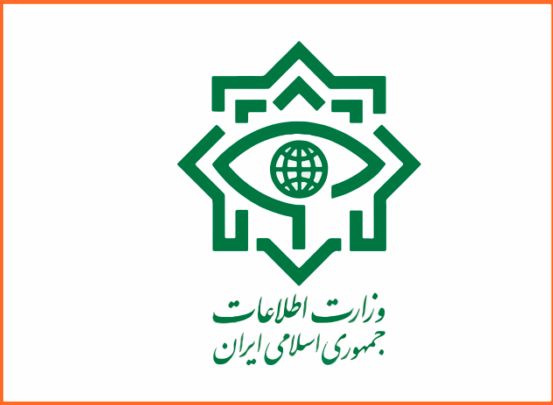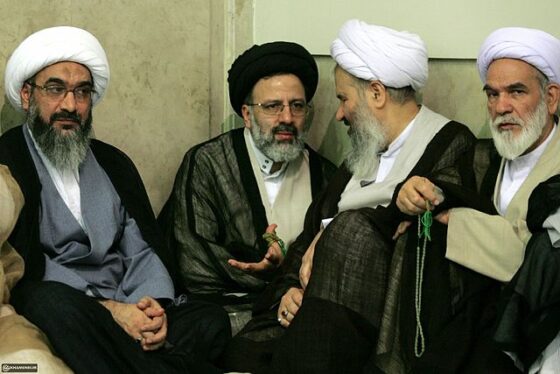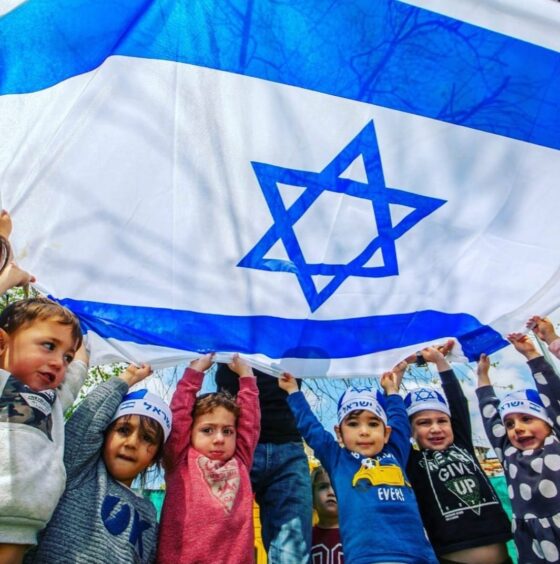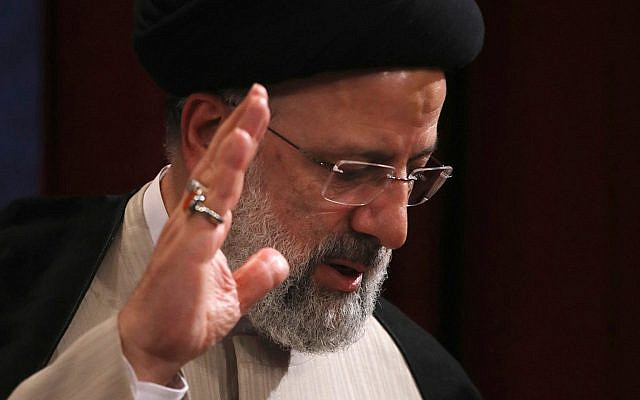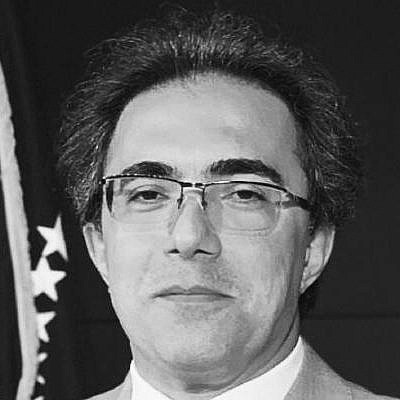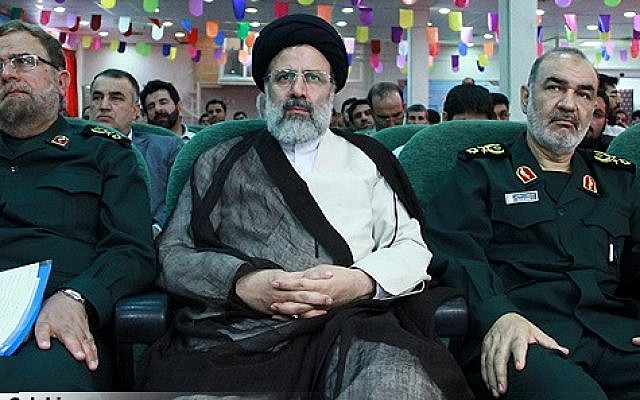Houshang’s Promise
Published on: 2020-12-10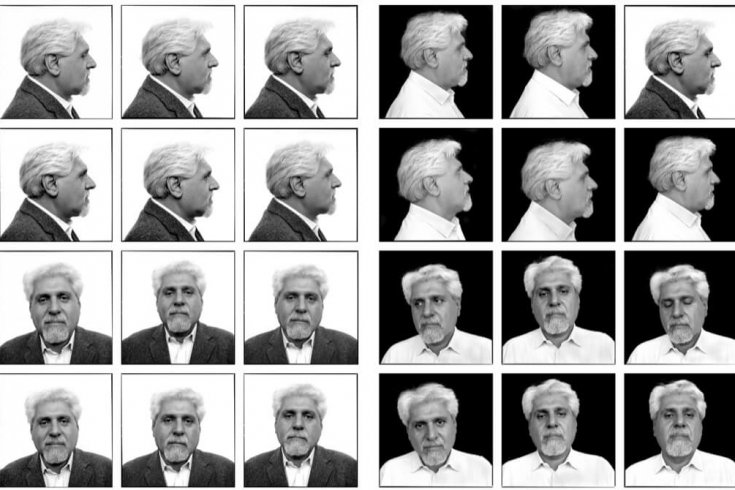
He was kidnapped and tortured, his multi-million-dollar business was destroyed, and his family threatened. Now, as a Canadian citizen, Houshang Bouzari is going after the government of Iran through the civil court system
BY LARRY KROTZ – JAN. 6, 2020
ONE AFTERNOON this past February Houshang Bouzari was trolling the Internet, as he often does, in search of news from his country of birth, Iran. Suddenly he came upon something that stopped him cold. “I couldn’t believe what I was seeing,” he said. What the fifty-one-year-old, who came to Canada in 1998 and received Canadian citizenship in 2002, had found was an album’s worth of pictures all set in an ancient dungeon. According to the Persian-language Web site, a once-secret prison in the middle of Tehran had been turned into a “museum of intelligence.” In this new incarnation it was going to display to Iran and the broader world the horrors of the final years of the Shah, Mohammad Reza Pahlavi, before the Islamic revolution in 1979 overthrew his U.S.-supported regime. The pictures showed the current president, Mohammad Khatami, touring past Madame Tussaud–style wax figures of prisoners — many of them dressed in the remnants of the traditional garb of clerics — in various states of agony. Some were presented hanging by their arms from the steel bars of cages; others had blood running down their bodies as torturers whipped them; a few were lying down, inert heaps of misery. But in one important respect, the presentation lied: the notorious dungeon had not closed down after the overthrow of the Shah, and its last prisoners were not Muslim clerics. For at least another twenty years it remained very much in operation and, in 1993 and early 1994, chained and blindfolded, Houshang Bouzari himself spent a terrible seven months in its bowels.
Any time now the Court of Appeal for Ontario is slated to bring down a decision that will affect not only Houshang Bouzari, but could potentially have a seismic impact on that torture chamber in Tehran — not to mention torture chambers in countless other places around the globe. It all stems from a project Bouzari has taken on in the safety of his new country. He and his lawyers are attempting to use the courts and the tool of the tort — the legal name for a civil action seeking redress for a harm suffered — in a novel way. Lawsuits have long been used to get compensation for a business loss, or for injuries suffered in, say, an automobile accident or a fall on an icy sidewalk. Bouzari, however, is using it to try to call to account torturers in distant places. When he initiated his suit four years ago, he had the field almost to himself. Now, it seems, newspapers report newly filed suits almost daily, including those of Canada’s two better-known international torture victims, Maher Arar and William Sampson. To Bouzari, the strategy, albeit restrained, makes eminent sense. It is a civilized response to a macabre evil. “We don’t have tanks or bombs,” he tells me, “but we have a legal system and we want to use that to make torturers pay dearly.”
In 1991, Houshang Bouzari was flying high. He was thirty-nine years old, dividing his time between Tehran and Rome. He had a Ph.D. in physics from Turin University and five years’ experience as an adviser on international affairs to the Minister of Oil for Iran. Troubled by what he describes as the increasing brutality of the Iranian regime, however, he’d decided to leave the state’s employ and go out on his own. “I could no longer work for this government. In the summer of 1988 they killed all the prisoners, thirty-eight hundred in Tehran alone, by hanging or firing squad. I couldn’t represent them at OPEC.” He became, instead, a consultant, a deal maker hoping to bring together Iran, which wanted to exploit its petroleum resources, and foreign companies that had the expertise to help the country do it.
His international connections helped make it work. He had been ambassador to Venezuela in 1984 and he knew where to find business partners in Italy, where he’d done his studies. He moved his wife, Fereshteh, and their two young children to Rome, and in less than four years he and his partners had started making their fortunes by putting together $3.8 billion worth of deals. (All figures are in U.S. dollars.)
Then the ideal project appeared on the horizon. Bouzari learned about a huge offshore oil and gas deposit beneath the seabed of the Persian Gulf, midway between Iran and Qatar. It’s still believed to be the richest offshore oil and gas deposit in the world, with enough natural gas, estimates Bouzari, to supply 25 trillion cubic feet per year for three hundred years. Qatar was using the U.S. companies Halliburton and Bechtel to exploit its side of the riches. Bouzari approached the National Iranian Oil Company, offering to help find the expertise Iran needed to access its end of the deposit. The potential wealth for Iran, he estimated, would be $10 billion per year.
He named the project “South Pars,” using the old Persian word for what is now Iran. In April, 1992, the consortium of five European and Japanese companies brought together by Bouzari signed a $1.78 billion contract to implement offshore drilling, platform construction, pipeline construction, and oil and gas exploration. For his services he and his company were set to receive a commission of 2 percent ($35 million).
Soon, however, an unsettling cloud drifted in. “A good friend,” he recalls, “approached me and said Mehdi Hashemi wanted to see me.” As Bouzari well knew, Mehdi Hashemi Rafsanjani was the twenty-four-year-old son of the then-president of Iran, Ali-Akbar Hashemi Rafsanjani. The president had five children who, in Bouzari’s words, “had been unleashed to do whatever they wanted in the international market.” Bouzari felt he had no choice but to agree to a meeting.
Over the next months a delicate, high-stakes dance took place. In a series of meetings, Mehdi offered to do what he could to “accelerate” the project. Bouzari’s unvarying response was, “Thank you, but we don’t need it.” He and his partners had already signed their contracts. But on the tango went, the son of the president continuing to up the ante from “acceleration” to “protection” and Bouzari trying to deflect him, politely but firmly, with expensive gifts — stationery from Gucci, cellphones from Nokia, a trip to London. “[Mehdi] said, ‘I have heard there is a very good masseuse in Geneva.’ I said, ‘Okay, go.’” When the bill was submitted it came to $6,000. Bouzari’s strategy, he recounts, “was to try to keep [Mehdi] away without making him angry.”
Mehdi, up to this point, had not asked specifically for money. Presently, however, the demands became more explicit. He introduced a friend, another twenty-four-year-old named Abbas Yazdan-Panah Yazdi. Suddenly Bouzari’stravel agent started getting requests for two tickets for junkets to Europe, which also foreshadowed the ripening of the shakedown. When Bouzari was in Rome with his family in May, 1993, the phone rang. It was Yazdi calling from the Hilton Park Lane Hotel in London, demanding $50 million, in order “to prevent the project from going down.” A day later, a follow-up call came from Mehdi. For Bouzari, the $50 million didn’t make sense: he and his partners stood to gain only a $35 million commission. He refused, but becoming nervous, offered $2 million and recorded the phone conversation. Soon after, on June 1, 1993, Bouzari, on a business trip to Iran, was in the apartment he kept in Tehran preparing for a meeting. At 10:30 the door buzzer rang. Three armed men entered his apartment, while another waited outside. “We are who you are to have your meeting with,” they told him. He was forced into a corner and made to sit on the floor with his head between his legs. The men ransacked the apartment, taking, among other things, the tape recording of the phone conversation with Mehdi. Then they put Bouzari in his own car, two of them following in theirs, and forced him to drive — with a gun in his ribs — to a place he knew just north of Tehran: Evin Prison, used by the intelligence ministry.
That the demands and threats from Mehdi, son of the former president, were connected to Bouzari’s subsequent detainment and torture is a theory — though a firmly held one. As Bouzari’s Toronto lawyer would later tell me, “We can’t prove it, and at first Houshang didn’t want to flaunt it because he was afraid.” But Bouzari’s statement of claim against Iran put forward the story, “and because there was no defense from Iran, those facts are now legally deemed to be true in Canada.”
They do not torture you on consecutive days,” Houshang Bouzari told me. “If you are tortured on successive days, you will die.” He was subjected to various forms of torture on a total of thirteen days over eight months, between June, 1993, and January, 1994 (the same number of days, Bouzari says, that William Sampson was tortured during his imprisonment in Saudi Arabia). On the first day, he was punched in the face. This, he felt at the time, was tolerable: “I think, punches I can take.” The next time they saw him, guards forced him to his knees and pushed his head into the Turkish toilet, a hole in the floor. As he struggled for breath, he had no choice but to ingest the feces swimming there.
He was kept at Evin Prison for forty days, then taken downtown to a secret place everyone had heard of without knowing its exact location. It was called Towhid, meaning “God is One.” “God is with us,” his captors told him upon his arrival there. “He is not with you.”
It was common knowledge that Ayatollah Ruhollah Khomeini had been kept there by the Shah: “Everybody knows his cell,” said Bouzari, “number 622 on the third tier, right side, next to the toilet.” Lifting his blindfold while left unguarded for a moment, he realized that he was in the same cell. His tortures and “interrogations” continued. The new prison was dirtier than Evin, and full of bugs. “If [the guards] were in a good mood I would get a shower every fortnight.” He sometimes saw the feet of other prisoners below his own blindfold — never their faces — but he could hear them. “People who were going to be executed would be brave enough to shout out their names.”
His own tortures increased. They hung him by his wrists from the ceiling of his cell and hit the bottoms of his feet with steel cables. This was not always done with malice; once, as he lay stretched and chained on an iron table, he managed to glimpse his tormentor from beneath his blindfold; the man hitting his feet — one of the most painful tortures conceivable and one that would leave him crippled a dozen years later — was calmly eating a banana.
Bouzari was never formally charged with anything. Instead, his interrogators (he calculates there were thirteen to sixteen in total, a figure he arrived at by keeping track of the sounds of different voices and by catching glimpses of their feet) made wild accusations. He was a spy. For whom? An industrial spy. An agent of the West. Ultimately, like nearly all other victims of torture (including Maher Arar and William Sampson), Bouzari gave in and signed a false confession, admitting that, yes, he was spying for the Italians.
“A few minutes before,” he says of his arrival at the first prison, “I had a $1.8 billion contract, twenty-eight people on my staff, big oil companies behind me. Then all of a sudden I have nothing. Their first goal was to remove me from the contract so that Mehdi could move in and have it.”
Indeed, one month after Bouzari was snatched from his apartment, in July, 1993, Iran declared the contract he had negotiated with the consortium of five European and Japanese companies void. A new company was quickly formed (as documented in the Iran Gazette) named OIEC. President Rafsanjani was its titular head, the Minister of Oil, Gholam-Reza Agha-Zadeh (who is now in the UN’s crosshairs as head of Iran’s atomic-energy ogranization), was the chairman of the board, and Mehdi Hashemi was its managing director. Its main domain of activity, says Bouzari, was “facilitating the South Pars Project and all other offshore projects.”
Bouzari, though, had only one concern: basic survival. Astutely, he figured out that his best strategy was to convince his captors he was worth more alive than dead. (“They knew I had money,” he says.) It worked. His torturers contacted his wife, Fereshteh Yousefi, in Rome, using Saeed, a former employee of Bouzari’s, to make the call. Bouzari had heard Saeed had been kidnapped two months before himself and had been assisting the authorities. Saeed telephoned Fereshteh, informing her for the first time of Houshang’s situation, and asked for $5 million. In a second phone call, Fereshteh was told that Houshang had suffered a heart attack and would die if not taken to hospital, which they would do only when she paid. They then played a tape into the phone of Houshang screaming during one of his torture sessions. Fereshteh paid $3 million, all she could immediately lay her hands on, wiring the money to a Ministry of Intelligence account in the Central Bank of Iran. Ten days later, the torturers took Bouzari to a phone and allowed him to speak to his wife.
They refused, however, to release him. His jailers wanted the full $5 million and over the next six months they worked on him to get it. Bouzari knew the additional $2 million was his bargaining chip and used it to make a deal: if they let him go, he would get the money from Rome and return with it to Tehran.
Finally, on a cold January 22, 1994, dressed only in trousers and a T-shirt, Bouzari was dropped at the side of a busy traffic circle in downtown Tehran. After eight months, he was free. But only sort of. The authorities refused to allow Bouzari to leave for another six months. First he had to pay $250,000 to buy back his passport, then he was watched like a hawk. “They didn’t restrict my movements, but it was a limbo.” On two occasions he obtained an exit visa, went to the airport, bought a ticket, and boarded a plane before guards came to pull him off. Finally, in July, 1994, he succeeded in completing a flight to London, then Rome.
Incredibly, he intended to keep his part of the bargain with his torturers. He collected $100,000 as a first payment, stuffed the cash into a satchel, and headed back to Iran, believing what he’d been told: if he failed to deliver the ransom, they’d put a bomb under his car in Rome. He bought a ticket from Rome to Tehran with a stopover in Vienna. In the Vienna airport, he phoned his elderly father, who by then was living in Arizona, as were three of Bouzari’s nine siblings. “Should I go through with this?” he asked. The old man requested a few minutes to consult the Koran. Ten minutes later he called back. “We saved you once,” he said, paraphrasing a section in the scripture: “Don’t push your luck. Wake up.” Bouzari abandoned his journey and caught a flight back to Rome.
But his anxiety grew. He had not kept his part of the bargain; surely they would now find a way to kill him. He spent the next four years in a state of constant trepidation. “I had to hide myself,” he says. “I had betrayed their trust.” In October, 1994, his son started university in London. “I called him ten times a day to make sure he was alright.” Thanks to the money he’d made in the early days of his business, Bouzari was able to move around between apartments in Geneva, Rome, and London, finally settling his wife and daughter in London. On two occasions he was approached on crowded streets by people who were obviously Iranian intelligence agents. Eventually, finding the tension unbearable, the family abandoned Europe. In 1998, they arrived in Canada.
To this day, Houshang Bouzari often awakes in the night to wander around his house in a Toronto suburb, haunted by memories of his ordeal. “They put you on a stool, they put a rope around your neck, they tell you, ‘Say your last prayers,’ and it is just a matter of one small kick. If you are alive after that, it is always with you. It never goes.” Troubled by nightmares and insomnia, he sits in the eerie glow of his computer screen and checks up on the world via the Internet. At fifty-one, he is handsome, with a neatly trimmed goatee and hair that is now silver. But the marks of his traumatic experience remain. He has lost the hearing in his left ear from being beaten about the head; he has severe back pain and disk damage caused by being left to hang in his cell. Because of the injuries to his feet, his well-made shoes are two sizes larger than he used to wear. He moves like an elderly man, or someone gingerly crossing a bed of coals. With money still invested, he and his family are comfortable. But he is obsessed with his past. One day in 2000, he paid a visit to the law offices of Gardiner Miller Arnold LLT in downtown Toronto, where he met with Mark H. Arnold.
Bouzari’s first approach to Arnold was on a routine commercial matter, but in the back of his mind he had another agenda. At the end of their meeting, he told his story. Arnold was stunned. “I couldn’t believe what I was hearing,” he says. Their meeting was scheduled for only half an hour; Arnold requested more time the following Wednesday and asked Bouzari to bring some documentation, some proof of his allegations. Bouzari came back with what paperwork he had: airline tickets, the receipt for the money transfers. Arnold asked what he wanted. Bouzari said, “I want my money back.”
Arnold had grown up in Vancouver, Montreal, Toronto, and, briefly, Winnipeg, with politically radical Jewish parents. His father, Abe, was a founder of Manitoba’s Association for Rights and Liberties. “One of my early memories,” says Arnold, “is marching with my mother in a parade to protest the execution of the Rosenbergs [in 1953, after Julius and Ethel had been accused of being Communist spies].” Over the course of his professional life, he had strayed from those radical roots into a comfortable Bay Street commercial-law practice. Now, at fifty-seven, Arnold recognized in Bouzari’s case a chance to redeem his activist credentials. The strategy of launching a lawsuit seemed logical. “I’m a litigator,” he says. “I couldn’t conceive of doing anything else.”
On November 24, 2000, just three months after their first meeting, Arnold filed Bouzari’s lawsuit with the Ontario Court of Justice. It consisted of a statement of claim for $3,250,000 in return of monies, plus $5 million in punitive damages on behalf of Bouzari, his wife, Fereshteh Yousefi, and their two (now adult) children. The Islamic Republic of Iran was served the suit via Gaetan Lavertu, Canada’s Deputy Minister of Foreign Affairs, who forwarded the documents via a Canadian official in Iran.
Getting to this point had not been easy. Inevitably, after approaching Arnold, Bouzari couldn’t help having second thoughts. Fereshteh was against the lawsuit: they had made it to Canada, they should sit tight and count their blessings. The Iranian response, Bouzari believed, would be “a campaign in the newspapers to discredit me, and then I would be killed.” He had no illusion that he could escape an assassin even in a suburb of Toronto. Struggling with his dilemma, he called Mark Arnold a number of times, asking, “Can we just stop this?” Arnold told him they could, at any time, adding, “But you have to overcome this.” In the end, Bouzari kept coming back to one thought: he had promised himself when he got out of Iran that “if I can tell my story, I will devote my entire life that this kind of thing never happens to anyone.”
In May, 2002, Madam Justice Katherine Swinton, after listening to their arguments, pointed out what might have seemed obvious: it was a long shot for an Ontario court to assume jurisdiction over an action that had taken place in Iran and had been done to an Iranian citizen. To no one’s great surprise, she dismissed the case. By this time, Arnold had a co-counsel, David Matas, a Winnipeg-based refugee lawyer who is well-known for his work in international law and human rights. They recommended an appeal; Bouzari agreed. Arnold and Matas presented their arguments to the Court of Appeal for Ontario this past December.
The case created something of a legal conundrum: the lawsuit was filed against the state of Iran. Yet when they went to court, the lawyers facing Arnold, Matas, and Bouzari were Canadians, from the federal Department of Justice. The Islamic Republic of Iran had completely ignored them; paradoxically, the government of Canada was intervening. The short explanation is that presently it is almost impossible to sue a foreign state, here or anywhere else. Globalization notwithstanding, governments operate under an almost seamless umbrella of immunity from the legal actions of other countries and, equally important, from private citizens in other countries’ courts. As a matter of custom, this dates back hundreds of years to monarchs helping each other fend off the rabble. More recently, the principle of state immunity, along with its close relative, diplomatic immunity, has become a foundation of international statecraft, a small price to pay (in the opinions of foreign offices) for good relations. To understand how this works in practice, one need only note the impunity with which cars with diplomatic licence plates cruise around national capitals, parking wherever they please.
The state immunity principle is that sovereign states interact on an international plane, and if one of them wants to complain about another, they should do so at an international forum, not through lawsuits in domestic courts. Moreover, a number of countries, including Canada, have enacted legislation further delineating this. Canada’s State Immunity Act, which was passed in 1982, states in part: “Except as provided by this Act, a foreign state is immune from the jurisdiction of any court in Canada.” And: “In any proceedings before a court, the court shall give effect to the immunity conferred on a foreign state by subsection (1) notwithstanding that the state has failed to take any step in the proceedings.” The Justice Department lawyer who handled Bouzari’s case, Peter Southey, told me that the government of Canada had no choice but to step in because, “in as much as Canada is opposed to torture, the rule of international law prevents us from judging the actions of foreign states in their own territories.” Mark Arnold has argued that defending torturers is no better than being one, but it does no good. Southey, further, had to defend the constitutionality of the Act; Arnold and Matas, among other things, were challenging the State Immunity Act under section 7 of the Charter of Rights and Freedoms, a section that deals with the right to protection of personal safety.
Yet, though it remains a functioning principle, broad state immunity is, little by little, coming under assault. Canada’s State Immunity Act itself chips away at it. In the late 1960s, a Canadian architect, stiffed by the Congo for his design fee for their Expo pavilion, had filed a lawsuit which he took all the way to the Supreme Court. He lost, but his case was part of what ultimately led Canada to create a small but important exception in its statute: immunity could be waived for commercial actions. Other countries, such as Britain and the United States, while still supporting the principle of immunity, provide their own exceptions. Successful actions, however, have proven rare.
Still, all movements toward international law render the principle of immunity more vulnerable. A few years ago General Augusto Pinochet, the former dictator of Chile, discovered the fragility of his immunity when he was detained in Britain at the request of Spain on charges of crimes against humanity; only a combination of British uncertainties about the force of emerging international law and, one might argue, Pinochet’s precarious health, prevented him from being extradited. Slobodan Milosevic, the former Yugoslav leader now on trial in The Hague, was not so fortunate. Concepts of human rights and democracy, as they expand the rights of citizens, correspondingly shrink the immunity — and impunity — of states, governments, and governors. Even if this is not always the case in fact, it certainly is so in public opinion, as was emphasized dramatically for both Canadian and Russian governments three years ago when a Russian diplomat, Andrei Knyazev, driving drunk, struck and killed a pedestrian, Catherine MacLean, in Ottawa. While diplomats on both sides scrambled, the magnitude of public outrage expressed in no uncertain terms what most people thought of state immunity.
In his lawsuit, quixotic as it might seem, Houshang Bouzari has taken a run at this seemingly impenetrable wall of state immunity. Has his run damaged it? Will a second run go through? Will more lawsuits now being filed become a tide that can’t be turned back? Legally, constitutionally, and in the context of evolving morals and ethics in a globalizing world, this case and others open a host of interesting and necessary questions for jurists and politicians alike.
On February 7, Bouzari flew to London to meet William Sampson, the Canadian who had been imprisoned and tortured in Saudi Arabia last year, and whose case has had much more public attention than his own. Bouzari wanted to talk about his experiences before the Canadian courts and encourage Sampson in a lawsuit of his own. At minimum, Bouzari believed they ought to support one another and make common cause. Sampson replied that he was going to try a lawsuit (which was filed a couple of weeks later), but would do so in the U.K. along with the British co-detainees who had shared his ordeal in Saudi Arabia. Part of their consideration, he said, was that if they lost they would be in a position to appeal their case to the European Court of Human Rights.
Though they tend to be lumped together, the cases of Bouzari, Sampson, and Maher Arar — whose experience of being sent to Syria by the U.S. government almost explicitly, it seemed, to be tortured has provoked a Canadian government inquiry — have as much separating them as linking them together. Sampson was a Canadian citizen on a work visa in Saudi Arabia when he was arrested with several British nationals and charged for a local murder. Arar was a naturalized Canadian citizen of Syrian birth, detained by U.S. authorities at JFK airport in New York, accused of having Al Qaeda connections, and sent via Jordan to Syria. Houshang Bouzari, by contrast, moved to Canada and became a Canadian citizen years after being kidnapped and tortured in Iran.
What they do have in common, aside from the fact that they were all held, mistreated, and tortured in Middle Eastern countries, is the fact that they are each seeking redress for their suffering using the courts, Arar having now filed in the United States against Syria, Jordan, and the U.S. government. Following fast behind them are others: three Iranian sisters tortured in Tehran while they waited for their immigration visas to Canada have launched a lawsuit against Canada; Muayyed Nureddin, an Iraqi-Canadian tortured in Syria, is at the moment asking only for an inquiry, though a lawsuit may follow. These connections are compelling on their own, but what they may also do is inspire the many others who have experienced torture in distant lands prior to their arriving in Canada.
Ed Morgan, associate professor of international law at the University of Toronto, is watching the Bouzari lawsuit closely. “Bouzari’s case,” he told me in February, “is premised on the issue that if we remove immunity to criminal liability of sovereigns, as in [the case of] Pinochet, then we should remove their immunity from civil liability. It is the next logical step.” Ultimately, Morgan doesn’t consider Judge Swinton’s decision as negative at all because “it says, in effect, we’re not yet there but the implication is that it’s just a matter of time.”
It is legitimate to ask whether Bouzari and his lawyers are following the right strategy in bringing suit against a state. Some armchair quarterbacks say they would do better finding a way to have Canada deal with Iran on their behalf, state to state. Or they would have a better chance suing not the state, but the individuals in Iran who were responsible for the torture. Bouzari retorts that it would be impossible to identify his individual torturers: he was blindfolded; they were anonymous. Arnold adds that they would also be unable to force them to come to Canada. “It would be different,” he says, “if the torturers were in Ontario.”
An intrinsic part of tort or civil lawsuit strategy is that when it redistributes wealth, it also redistributes power. Which is why this lawsuit has attracted attention in circles both legal and political. It is possible that the appeal court — or even the Supreme Court where he is determined to go if necessary — will allow Bouzari’s suit on the commercial exception of the statute, something the original judge declined to do. That would be a victory for him and his family, but it would not challenge any existing laws. However, says Ed Morgan, should the court accept the argument that there should be universal civil jurisdiction for torturers, that would “revolutionize” the law. Canada is home to hundreds of thousands of people who have come as refugees: 25,122 in 2002 alone, the most recent year for which there are statistics. It is fair to assume that some of these have been tortured. It is, alas, the rare person among them who, like Sampson, Arar, or Bouzari, will go public to tell their story, and cause a fuss. Most are determined to keep their heads down and go quietly about their new lives. Some have not even revealed their experiences to their own families. If the law were reinterpreted, as Morgan suggests, that would hold dramatic consequences for everybody — torture victims, torturing states, and the judicial system in Canada. “The doors,” he posits, “would be open very wide, wider than they’ve ever been before.”
In Ottawa, the embassy for the Islamic Republic of Iran is a four-storey, red brick building on Metcalfe Street, a row of modest apartment blocks of various styles and vintages. The street is not in one of the tonier embassy neighbourhoods. Next door is the headquarters for the Canadian Soccer Association. Yet even as a piece of architecture, the embassy looks defensive: iron bars cover the lower windows and a forbidding fence surrounds a minuscule garden and the entrance to underground parking. If Bouzari wins his case, Iran’s properties in Canada, such as this one, could be confiscated, though Mark Arnold believes “they would cut a cheque.” For its part, Iran remained silent when the lawsuit was filed and embassy officials refused to be interviewed for this article. But they are certainly watching.
Almost equidistant from the Iranian embassy are two institutions: Canada’s Supreme Court and Parliament. If one doesn’t decide the fate of state immunity, it is almost certain that the other will. Here in Ottawa it is politics that could make immunity vulnerable. Courts might uphold the law, but public opinion could demand that the law be changed. As one of Bouzari’s lawyers, David Matas, put it, “Sometimes when you lose, you still win.” On the strength of lobbying around the Bouzari case, NDP Member of Parliament Svend Robinson has already proposed that the State Immunity Act be amended and promises to table a private members’ bill to do just that. His amendment would place torture, as well as commerce, outside the bounds of state immunity. The wording, he told me, would allow lawsuits for “death or personal injury suffered in Canada or a foreign state.”
The Minister of Justice, Irwin Cotler, refused to comment on “a case that is before the courts.” But the questions it raises, one would think, have to be very much on his mind. Is defending torturers — as Canada in effect is doing in this case — as indefensible as being one? Is the law (and the practice of state immunity) a good one? If this case is decided in such a way that it opens the floodgates to other cases, what would that mean for Canada? Is Canada ready?
“Ihave dreamed of today ten years ago,” Houshang Bouzari says. He is standing, dressed casually in a pastel sweater, at the end of the head table in a conference room in Toronto’s Westin Prince Hotel. Arrayed in front of him are a group of about fifty law students, professors, and people involved in human rights organizations. It’s a Saturday afternoon, January 17, 2004, and this is the inaugural meeting of InCAT, the International Coalition Against Torture. It is also almost ten years to the day after Bouzari’s release onto the side of the Tehran traffic circle. Outside the conference room stretches a buffet table loaded with lunch for everybody. Beside Bouzari are his lawyers, Arnold and Matas. Also at the podium is Rachel (Raha) Shahidsaless, an Osgoode law student and daughter of his good friend since they were eleven years old, Shahir. The young woman holds the job of executive director of the new organization, but Bouzari, though shy to speak and needing to be cajoled into it by Arnold, is the driving force behind it. It is his idea. He picks up the tab for its expenses. This initiative is as much his dream as is the lawsuit, and between them they serve as an aspect of his healing, a vent for his anger, and a chance to turn what has happened to him into something good. Through InCAT he will undertake efforts to contact other victims of torture to offer comfort, encouragement, common cause. “If you are lucky enough to get out alive, you have still lost everything,” he tells the assembled group, most of whom are under thirty and describe themselves almost universally in introductions as “having a strong interest in human rights.”
“Victims of torture have lost their voice. I was in hiding for years,” Bouzari says. Then he recounts the reasoning behind both this project and his lawsuit: “If each time they move their arm back to strike a victim they think, ‘This will cost ten thousand dollars,’ they will not so easily do it. They will have to stop. We will make it impossible for them to commit these crimes any longer.”
